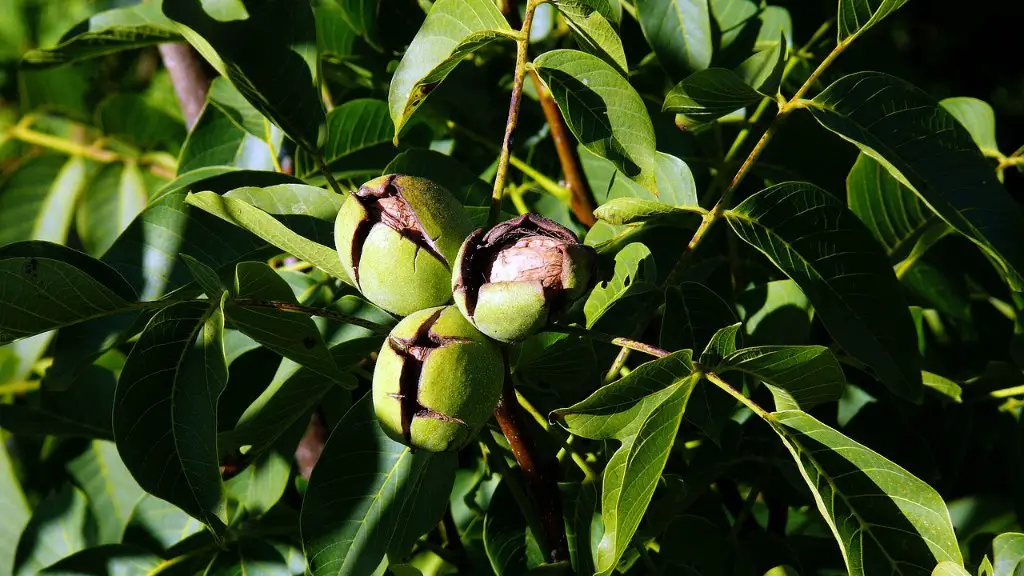Planting a lemon tree can seem complicated, but it’s actually quite simple. It doesn’t take much time or effort to get started, and you’ll have a bounty of delicious, juicy lemons in no time! Here’s how to get started and how long it usually takes to plant a lemon tree.
When you first purchase a lemon tree, you’ll need to decide what type of soil to use. Good drainage is key and you can use either potting soil or a mixture of garden soil, sand, and peat moss.
Next, you’ll need to select the correct container for your lemon tree. You should use a container that is twice as big as the current root ball, and make sure that it has plenty of drainage holes in the bottom. As an added measure, you should place a plastic sheet at the bottom of the container to prevent any water leakage.
After the container has been prepped, you can begin the planting process. Carefully remove the tree from its current container and place it into the new, larger container. You will also want to loosen any roots that are especially tightly wrapped around the rootball. Add potting mix around the tree, up to the same level of the rootball, and gently press down to solidify the soil.
Once the tree is firmly placed in its new container, the next step is to add water. Make sure the water is lukewarm and slowly trickle the water beneath the soil and around the roots of the tree. You want to keep the soil moist, but not drenched.
The last step is to place the tree in a sunny outdoor area that is protected from strong winds. Lemon trees typically thrive in sunny, sheltered locations and will do best when exposed to at least six hours of sunlight a day.
In total, it usually takes about an hour to properly plant a lemon tree. It is crucial to take the proper steps and adhere to best practices, as this will ensure that the tree thrives over time. With just a bit of know-how and regular maintenance, you’ll have a wonderful lemon tree that produces delicious fruit!
Types of Lemon Trees
When it comes to planting a lemon tree, the first step is to determine the right type of tree for your space. Common types of lemon trees include Eureka and Meyer lemons, both of which are widely available at most gardening stores or online.
Eureka lemons are the standard lemon tree variety and produce tart, acidic fruits that are ideal for cooking. Meyer lemons, on the other hand, are sweeter and more fragrant, making them perfect for desserts and preserving.
It’s important to note that Meyer lemons are sensitive to cold temperatures. If you live in an area that experiences frequent freezing temperatures, you may want to consider planting an Eureka lemon tree. Otherwise, you can feel confident choosing either variety.
No matter which type of lemon tree you choose, you’ll need to make sure that it gets proper sunlight and water. Lemon trees need at least six hours of sunlight per day and a regular watering schedule, otherwise they can become stressed or develop disease.
It’s also important to keep in mind that even indoor lemon trees can get too large for their pot. You may need to transplant your lemon tree into a larger pot if it begins to outgrow its current container.
Lemon Tree Care Guide
Once you plant your lemon tree, it’s important to understand how to properly care for it. Proper maintenance and care can make a huge difference in the health and productivity of your tree.
For starters, fertilizing your lemon tree is essential for healthy growth. Use a balanced fertilizer and follow the instructions on the package for when and how much to apply. To get the most out of your fertilizer, it’s best to apply it to the soil at least twice a year.
Pruning is also a crucial part of lemon tree maintenance. Pruning keeps your tree healthy and also helps it to produce more fruit. Prune away any damaged, dead, or overly crowded branches using a pair of sharp pruning shears. Be sure to make clean cuts and avoid tearing or ragged edges.
Finally, pay attention to signs of pests or diseases. Lemon trees are especially prone to scale, mites, and aphids, all of which can wreak havoc on your plants. If left unchecked, these pests can cause significant damage and should be eliminated as soon as possible.
If you follow the steps outlined above, you can count on your lemon tree to thrive for years to come. With a little bit of effort and TLC, you can enjoy a bounty of fresh lemons season after season!
When to Harvest Lemons
Once your lemon tree is fully established, it’s time to start harvesting! If you’ve never grown lemons before, you might be unsure as to when they should be harvested. Generally speaking, lemons take between six and 10 months to ripen, depending on the variety.
It’s best to wait until the lemons have stopped growing and the skin is deep yellow (for Eureka lemons) or orange-yellow (for Meyer lemons). If possible, wait for the skin to soften and for the lemon to give off a strong aroma. This indicates that the lemon is ripe and ready to harvest.
When harvesting, try to cut the stem at an angle to prevent it from tearing. Also, be careful not to pull the stem off, as this could damage the remaining lemons. If you need to remove the branch entirely, use a pruning saw or pruning shears.
Finally, check your lemon tree regularly for any signs of disease or pests. If your tree is affected by any type of infestation, take action as soon as possible to prevent further damage. Regular maintenance and care is the key to a successful lemon tree!
Replanting a Lemon Tree
Eventually, your lemon tree might need to be transplanted into a larger pot. You can tell that your tree is outgrowing its current container if the soil is consistently dry, the tree begins to tilt, or the leaves become yellow and droopy.
When you’re ready to transplant, use a container that is twice as large as the tree’s current pot. Make sure that it has plenty of drainage holes in the bottom, and also place a plastic sheet at the bottom of the container. This will help to prevent any water leakage.
Next, carefully remove the tree from its current pot and place it into the new one. Again, you will also want to loosen any roots that are especially tightly wrapped around the rootball. Finally, add potting mix around the tree, up to the same level of the rootball, and gently press down to solidify the soil.
When replanting a lemon tree, it can take between one to three hours to complete the process. Make sure to take your time and following the steps outlined above will ensure a successful transplant. With a little extra effort, your tree should re-establish itself in its new home in no time!
Nutrition for Lemon Trees
One of the most important aspects of keeping your lemon tree healthy is to make sure it is getting the proper nutrition. Feeding your tree the right nutrients will help it to thrive, ensuring a bountiful harvest each and every season.
The first step is to ensure that your soil has the right levels of essential nutrients. Check the pH levels of your soil and, if necessary, add lime or other nutrient-rich compounds. This will help to improve the overall soil quality and also make it easier for your tree to absorb vital nutrients.
Fertilizing your lemon tree is also a crucial part of the process. Choose a balanced fertilizer and make sure to follow the instructions on the package for when and how much to apply. You’ll also want to keep an eye out for any signs of pests, as these can cause serious damage to your tree’s health.
Finally, pay attention to how much water your tree needs. Lemon trees require regular irrigation and should be watered on a consistent basis. Too much water can ruin the roots, so make sure to closely monitor the soil condition and adjust your watering schedule accordingly.
With a little bit of TLC, your lemon tree should be well-nourished and ready to produce plenty of delicious lemons. Remember to keep up with regular maintenance and you’ll be reaping the rewards in no time!




